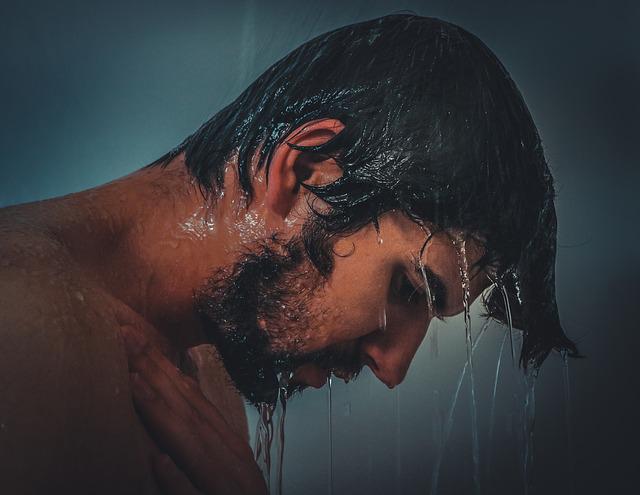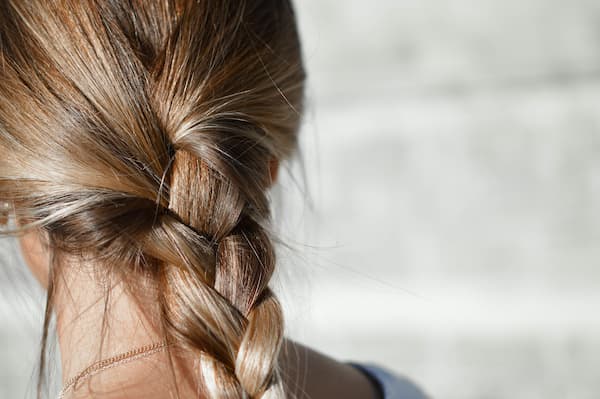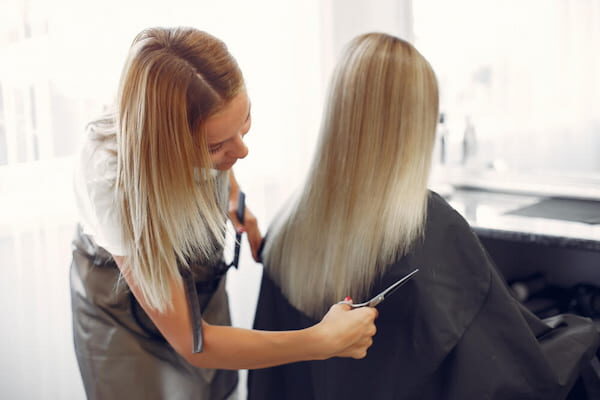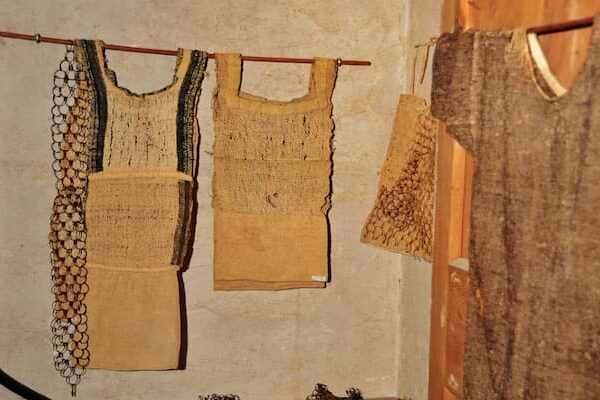In this article, we will discuss the benefits of wrapping your hair and provide step-by-step guidance on how to wrap your hair to protect hair.
Table of Contents
What Is Hair Wrapping
Hair wrapping not only is a hairstyle used to set the hair in a smooth, straight state but also a technique to maintain that hairstyle for people with naturally curly and frizzy hair. Wrapping part of your hair around your head and keeping part of your hair straight and tight will make your hair look smooth and relaxed.
How To Choose The Right Hair Wrap
It is important to choose silk or satin fabrics when choosing a hair bundle. This is because silk and satins have tightly woven fibers that slide easily over curls while helping the hair retain moisture. Other fabrics, like cotton, are more permeable than silk. This means they can actually suck moisture out of the hair and can also hold it, causing it to break and twine.
For sizing, opt for a large square scarf as it’s easier to wear. A length around 22-28 inches is a good overall size, but if you have thick hair or a small head, you may need to adjust the size accordingly. The key is not to have too much excess fabric hanging behind the wrap and to make sure all your hair is covered.
The Benefits Of Wrapping Your Hair
- Reduce Drying
If you have curly or naturally curly hair, you already know the pain of being a curly girl with dry hair. Curly hair is naturally dry because curly hair bundles are spiral or curly. This means that oil from the scalp (also known as sebum) is more difficult to move down the hair stem than straight hair. This can cause hair to dry, curl and break more easily. This was exposed overnight. If you’ve heard that your skin needs a beauty break, so does your hair. Protecting your curly hair helps keep your hair hydrated and healthy.
- Keep Your Hairstyle
Sleep in perfect curly hair, toss and turn all night, and wake up to find that curly hair becomes crushed, flat, and curly. Wrap your hair, you can protect your curly hair so that you will feel much more relaxed in the morning. If your hair is relaxed or permed, it will also help protect your hair for longer.
- Reduce Breakage And Entanglement
As we have already mentioned, cotton pillowcases can cause serious damage to curly hair. When you sleep, cotton will pull your hair, causing tangles in the short term and breaks in the long term. Wrapping your hair in silk can eliminate these annoying problems.
Preparation
- Part your hair. Use a comb to part your hair from the crown of your head to the top of your neck. The crown begins at the upper back of your skull where your head begins to curve downward. Start
- Pin up the left side. Take the brush in your left hand. Place the outer edge of it along your part and on the left half of your hair. Brush the hair toward your left temple, keeping it smooth alongside your hairline. Slide a bobby pin an inch left of the nape of your neck and then again right above your ear. Continue placing bobby pins every 2 inches from here.
- Pin up the right side. Take the brush in your right hand and place the outer side of it on your part with the brush over the right side of your hair. Brush up from here towards the temple gently. Be careful and try not to brush over the bobby pins. Once again, place a bobby pin 2 inches from the nape, again just above your ear, and every 2 inches from there to the ends.
Steps To Wrap Hair:
Step 1: Moisturize Or Shampoo
A thorough rinse before wrapping your hair will provide enough moisture to keep your hair in place for the next few hours. Cleaning your hair makes this process much easier and enhances the natural oils in your hair. Look for shampoo, conditioner, or moisturizer containing natural oil to get the best hair preparation and rejuvenation without damaging the hair. Some examples include al dry oil, coconut oil, and jojoba oil. Depending on the length or texture of your hair, you should keep your hair hydrated for about 20 minutes, then rinse it with cold water to block the moisture and preserve its essential oil. When your hair is moisturized, try to make it smooth to eliminate possible tangles, tangles, and knots. If you wash your head, wipe off enough moisture with a towel to keep it moist. If you want to remove moisture from your hair before combing and wrapping it, you can also use a cool hair dryer.
Step 2: Separate Your Hair Before Combing It
Once you are sure that your hair is soft and not tangled, take a comb and divide your hair into two halves to simplify the combing and wrapping process. Keep your oars to comb your hair in the desired direction and wrap it around your head. Splitting it into parts with this brush can cause uneven splitting. It is best to start from the top of the head. After finding an ideal parting line, comb half of your hair in a uniform direction. A standard method that many people like to use is to comb the segmented hair in front of your face and then throw it aside. Smoothing out your hair with moisturizer, or trimming dead ends of your hair, can help you save extra time while maintaining your hairstyle.
Step 3: Wrap The First Half Of Your Hair
After dividing the hair into several sections with feathers, start from both sides.
Next, use the paddle brush to smooth most of the hair. In addition to making the hair smooth, the brush head can also remove the oil from the hair or moisturizing cream from the root to the tip. When combing your hair, try to fix it with your free hand, and then fix it with a hairpin. If you have long hair that is difficult to control, you may need to use more hairpins. Another technique you can try is to take the longest end of your hair and stick it on the side of your head near your ears. When you place the hairpin, you can use it as a reference point. Brush every area of your hair in a circular motion until you reach the back of your head. You may also want to consider combing your hair until it reaches its farthest point. However, this technique depends on the length of your hair.
Step 4: Wrap Your Other Half Of Your Hair Repeatedly
After you wrap the first part of your hair, repeat the process on the other side of your hair. You should continue the circular motion from front to side and make it as smooth as possible. When you wind the rest of your hair around your head, use a hairpin to hold the hair together because the two separate parts meet.
Step 5: Protect Your Wrapped Hair With A Scarf
After wrapping each section of your hair and flattening the rest, you can wrap your hair in a scarf. You will find that the most common material is satin or silk. Although both materials are effective in keeping hair smooth and preventing damage, satin is the best choice to preserve the natural oil in your hair while you sleep. Lay the scarf on your head and wrap both ends around your head. After crossing the ends of the back, pull them toward the forehead and tie a knot. Avoid making your hair too tight, making your hair unable to breathe, and preventing the oil in your hair from conflicting with other surfaces. Push the remaining hair clumps under the scarf to ensure that every inch of your hair is treated equally while you lock in moisture. Alternatively, you can use Satin hats to keep your hair hydrated and prevent curling or forking.
Step 6: Post Packaging Treatment
After putting the scarf around your head, you need to wait a few hours until your hair is completely dry. Depending on the length of your hair, your hair may dry for a different time than others. Before removing the scarf, make sure you are ready to comb and shape your hair to avoid exposing it to unnecessary humidity. It’s better to wait a little longer than to destroy it as soon as you wake up. After grabbing your comb or brush, untie your scarf, start taking off your hairpin, and untie each section of hair. Then, comb your hair in the opposite direction to the direction you wrap your hair to make it smooth and prevent knots. This process allows you to prevent messy clumps from protruding when releasing hair and re-styling. Once you’ve sorted everything out, you’re free to continue your morning haircut.

Different Ways To Hair Wrapping
Dry Wrapping
One of the most popular and different ways to wrap your hair is dry wrapping with saran wrap. This is good for when you have a straight hair look or blowout and want to make it last longer. When you want to extend your style without adding extra weight with oils, this is a great choice.
Pantyhose Wrapping
Use another household item that you may have at hand. This method is very helpful for curling hair. The advantage of this wrapping method is that it won’t squeeze your hair, and you don’t need to twist it. This will help eliminate tangles or lumps when you remove the wrapping paper. Pantyhose is also breathable, so you won’t feel too hot at night, which is an extra benefit!
Satin Wrapping
Of course, satin or silk is still the first choice for many women. This soft material does not take away moisture from the hair and actually helps prevent curling due to friction.
Turban Wrapping
Not all wraps are designed for bedtime. Stylish silk scarves and head wraps are a great method to get through your day in style without damaging your curls. One of the most stylish approaches to wearing a head wrap is the turban style. This allows you to protect your edges while still letting your stands hang loosely to show off the texture.
Pineapple Wrapping
Another popular way to wrap your hair during the day is with pineapples. Although this can also be used as a night option, it is completely acceptable to wear it during the day.
This is another way to protect your roots and edges while allowing your ends to occupy the central stage.
How Long Do Hair Wrapping
You don’t have to redo the packaging every day. It can be wrapped for three weeks at a time.
Just wash and dry your hair as usual, but in order to maintain the luster of the hair line or yarn, please limit the use of spray and styling solution. Remember to undo the Wrap, gently unwind the wraps and unfasten the finishing knots.
Summary
The article talked about the right choice to hair wrap, the benefits of hair wrapping, preparation, steps, different ways to hair wrapping, and suitable time for hair wrapping. Before learning how to wrap your hair, all the above factors you should consider.





